Sabbatical Journey
The second stage of our Turkey tour included stops at the historic cities/ruins of Pergamon and Ephesus. These Roman cities span the centuries before and after the "common era" and provide a glimpse not only into ancient Greek (Hellenist) and Roman life, but also the Byzantine era that followed. The remains currently at Pergamon are more modest with some of the more impressive pieces removed in the late 19th century by German archaeologists who took them to display in Germany. A few pillars and archways have been reconstructed and an arched walkway and the theater remain as well. The theater would have seated about 10,000 people leading scholars to believe the population at the time would have been 100,000 - as 10% of the population seems to be the rule of thumb for seating capacity. The theater is also sloped at a 70 degree angle which makes it the steepest of Greek theaters and is the best preserved today.
Classical Turkey & the Aegean Coast
Kusadasi, Turkey
The second stage of our Turkey tour included stops at the historic cities/ruins of Pergamon and Ephesus. These Roman cities span the centuries before and after the "common era" and provide a glimpse not only into ancient Greek (Hellenist) and Roman life, but also the Byzantine era that followed. The remains currently at Pergamon are more modest with some of the more impressive pieces removed in the late 19th century by German archaeologists who took them to display in Germany. A few pillars and archways have been reconstructed and an arched walkway and the theater remain as well. The theater would have seated about 10,000 people leading scholars to believe the population at the time would have been 100,000 - as 10% of the population seems to be the rule of thumb for seating capacity. The theater is also sloped at a 70 degree angle which makes it the steepest of Greek theaters and is the best preserved today.
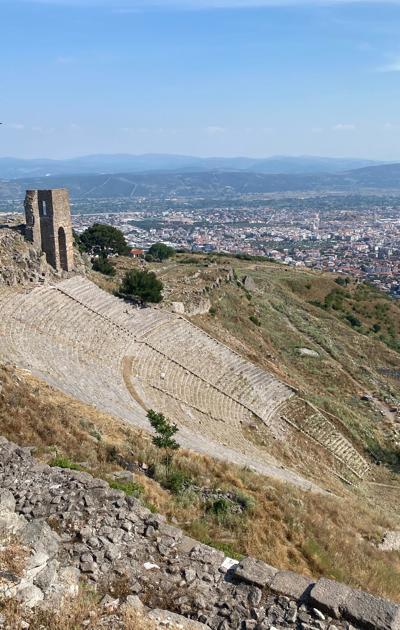
Ephesus, site of one Paul's early church plants, is a much larger, both better preserved and reconstructed site, that appears to host thousands (maybe tens of thousands!) of visitors everyday. Three portions of the ancient city that are currently open for viewing are about a mile and half long and there are clearly additional sections that are being excavated and not available to see at this time. This was one of the few times that we realized having a Muslim guide was a disadvantage as we did not hear anything about the Biblical significance of the site. To be fair, the many informational signs spread throughout the site also did not mention many connections to early Christianity. We did encounter a lot of "footsteps of Paul" tours and overheard a bit of their commentary, but mostly took in a broader tour regarding the Roman layout of homes, buildings, the library (the most impressive remaining ruin) and the theater which would seat about 45,000 people, signaling a population in Roman times of roughly half a million. For a modest additional fee we were able to tour a section of "terrace houses" built into the hillside that are being excavated and restored. Along with a more detailed look at the layout of these upper class homes, we were able to see some of the murals on walls and mosaic tile floors which are astonishing in their beauty and detail - especially after 2000 years.
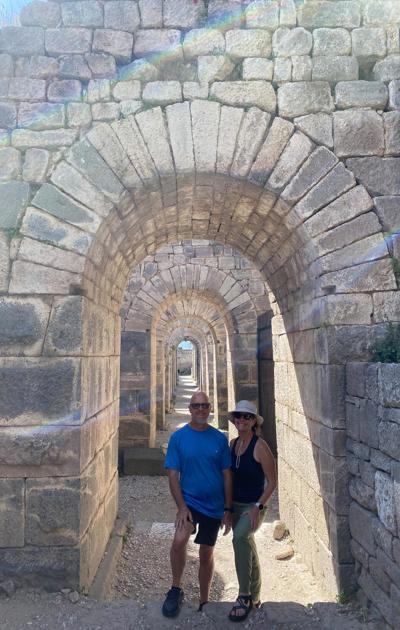
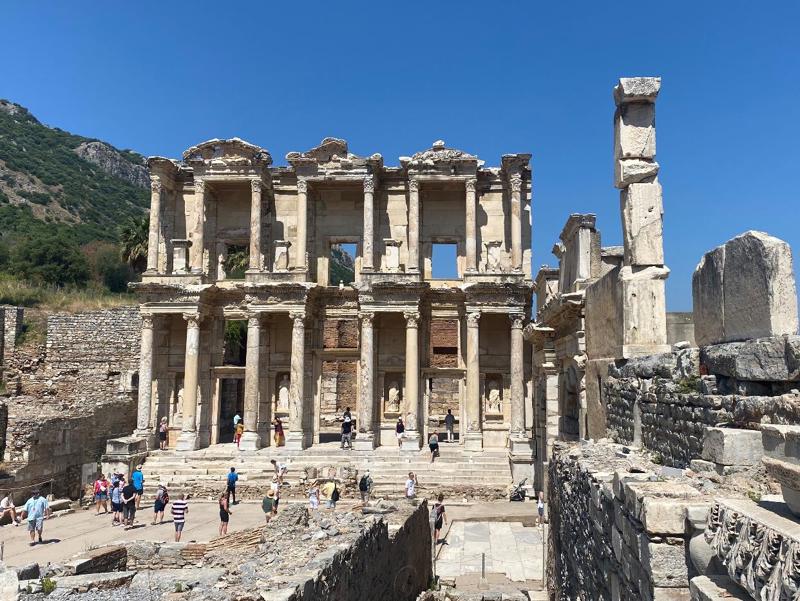
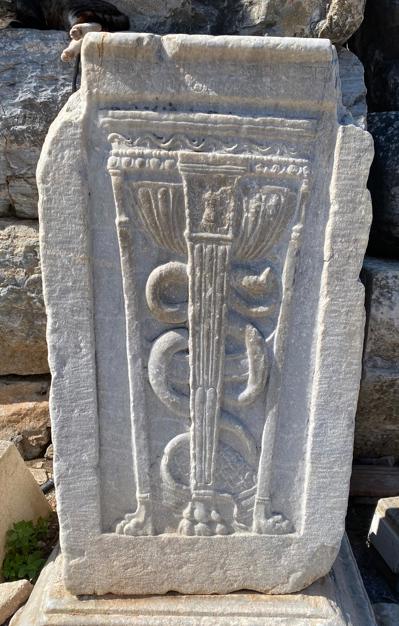
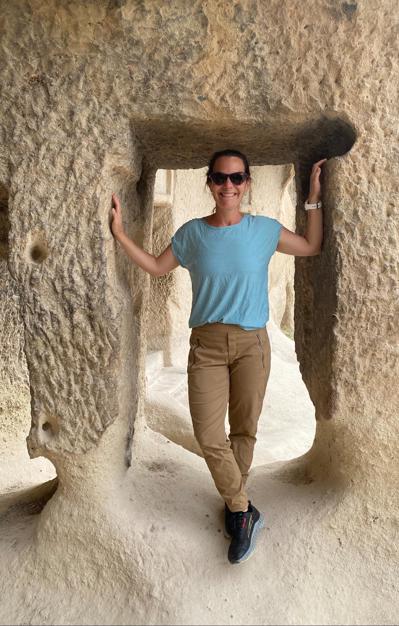
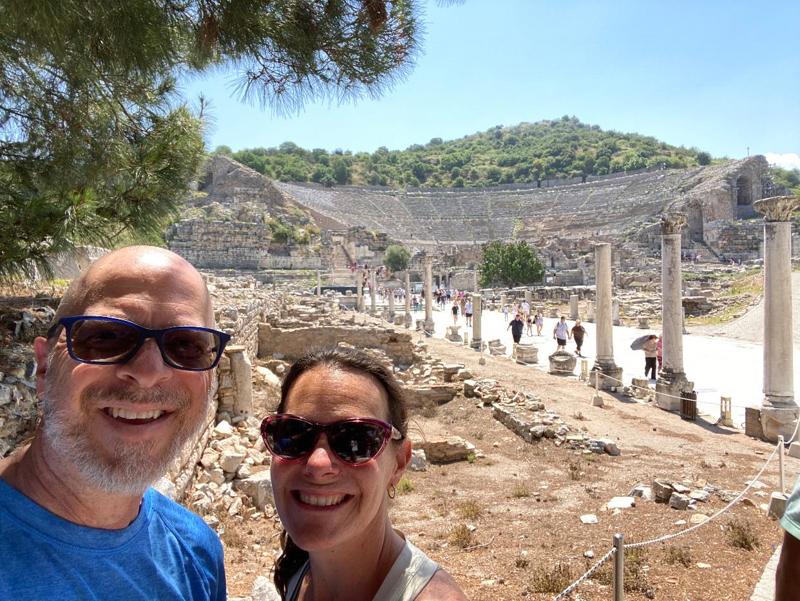
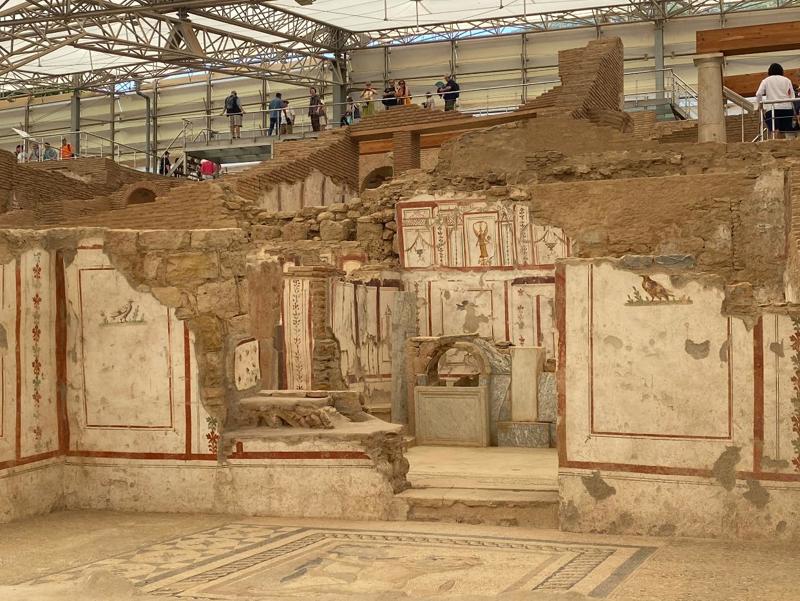

After the morning at Ephesus, we enjoyed a lovely picnic of grilled meats outdoors under the trees at a large estate which originally housed a wealthy British family that helped build the railroads in the area. Lunch also included wine, olive oil and other wonderful treats that are grown and produced locally on the property. This estate is now owned by Turkish families and has been transformed into an expansive workshop, apprentice-style school, and sales display for classic handmade Turkish carpets.
We learned that the traditional technique for hand woven Turkish carpets involves hand dying the cotton, wool and hand-spun silk using natural plants and flowers (except for the silk, which needs chemical dyes to take the rich colors). The finished materials are then used by the women (they are all women) who do the weaving by hand using a "double knot" that is unique to Turkish carpets and makes them stronger and longer lasting than other traditional rugs. A single carpet can take weeks or even several months for a woman to complete. These artisans learn their craft through a competitive apprenticeship process and, if successful, provides a good salary along with healthcare and other benefits from the ministry of
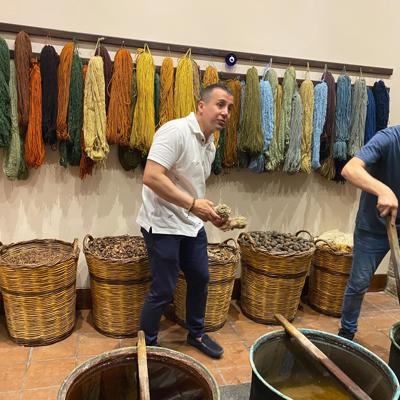
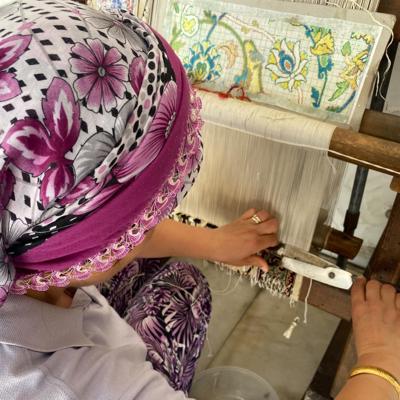
tourism that have sustained this tradition. We weren't in the market to buy a carpet, but they were impressive and beautiful with a price to match!
The final stop of the day was to the historic Greek village of Sirince up in the nearby mountains. This little town boasts winding pedestrian streets lined with shops, wine tasting rooms, and turkish ice cream (dondurma). After a bit of wandering, we made our way to the top of the mountain where an inn, Nisanyan, sits with stunning views overlooking the town and valley below. The inn and restaurant are owned and run by a Turkish woman named Mujde Tonbekici. As we arrived, she welcomed us with traditional Turkish sherbet -- a sweet drink made with fresh fruit -- and then quickly realized that the driver who brought us also brought the first copy of her recently published Turkish cookbook. We got to watch her flip through the pages for the first time with unbridled excitement! She led us in a cooking class of traditional Turkish mezzes, a stew (guvec) and dessert (semolina and pine nut halva). All of the food was delicious and even better accompanied by local wine and a breathtaking view!
Our home base for these days was the coastal town of Kusadasi on the Aegean Sea. We had some time to walk around this cute town and even dipped our toes in the Aegean Sea. One bonus was a great path along the sea that allowed Miriam to run for the first time in nearly a month, just in time for Global Running Day.
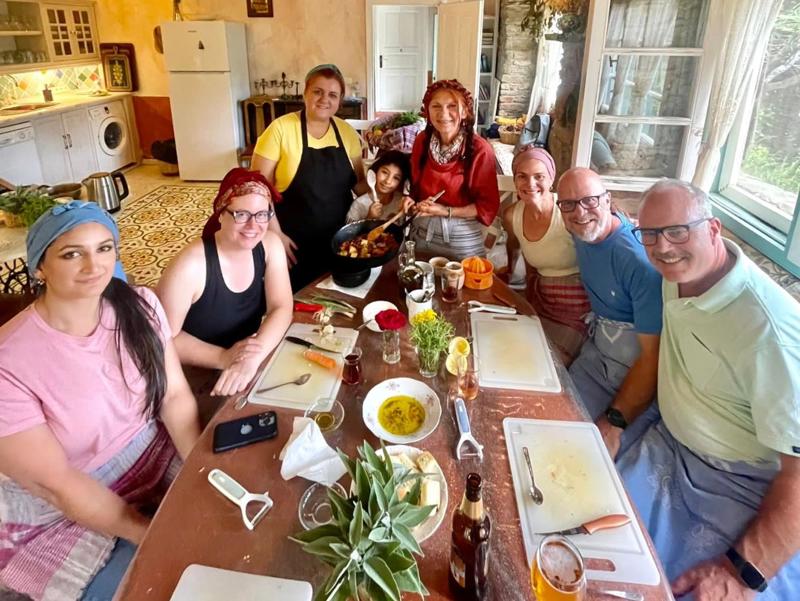
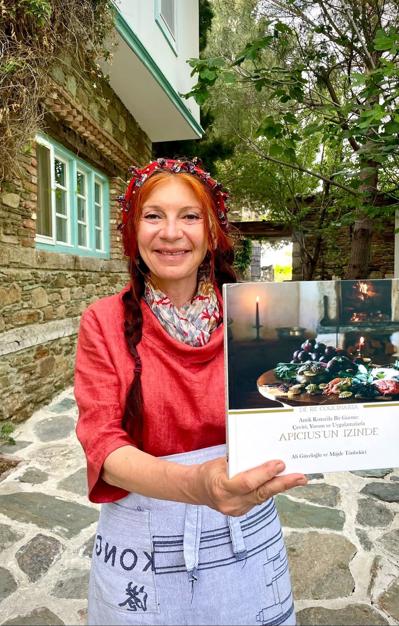

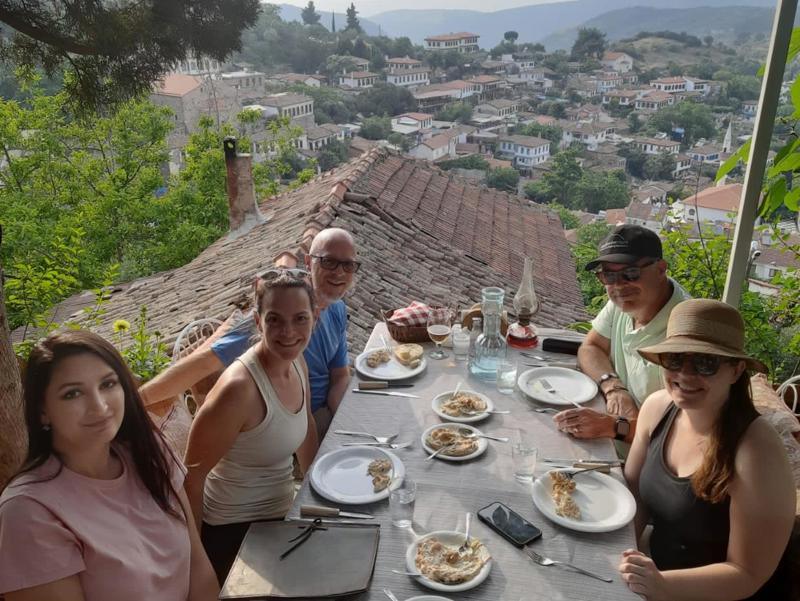

1.
Foreword
2.
The Itinerary
3.
Packing
4.
Cairo - Part 1
5.
Cairo - Part 2
6.
Sites of Ancient Egypt
7.
Egyptian Temples
8.
Valley of the Kings
9.
Egyptian Culture and Final Thoughts
10.
From Egypt to Morocco
11.
Northern Morocco
12.
Water and Climate Issues
13.
Cultural Capital of Morocco
14.
The Sahara Desert and Atlas Mountains
15.
The Road of 1000 Kasbahs and onto Marrakech
16.
A Wee Break in Londontown
17.
Malawi - First Impressions
18.
BEE World Pastor's Course
19.
Malawi’s National Parks
20.
Zomba Plateau
21.
Malawi, a Retrospective
22.
Plant with Purpose Tanzania
23.
Tanzania Safari
24.
Safari Animal Sighting List
25.
Enchanting Istanbul
26.
Classical Turkey & the Aegean Coast
27.
Cappadocia
28.
Lisbon
29.
Portugal's Heartland
30.
A Rocha Visit and the Southern Coast of Portugal
31.
Welcome
32.
Looking Back and Moving Forward
33.
...and home!